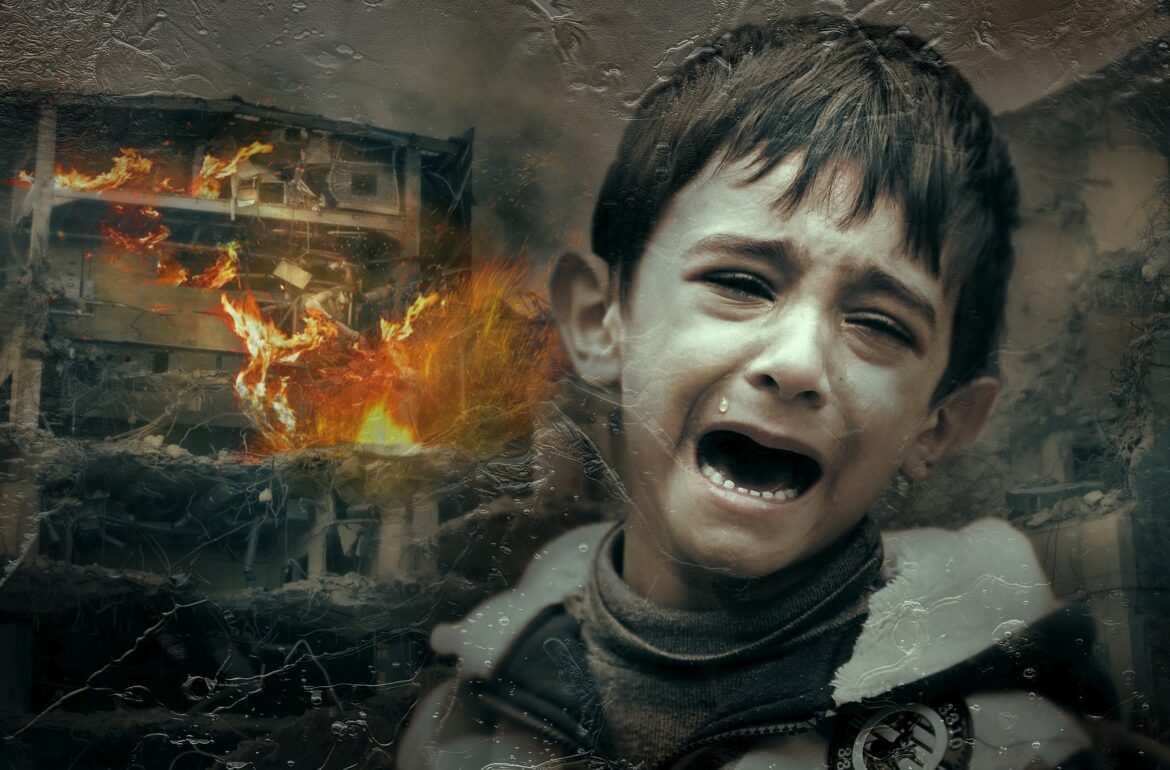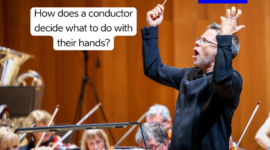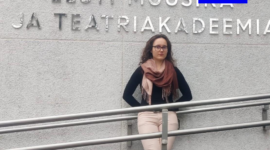Try to describe the experience of hitting your elbow against the edge of a table. How would you put the specifics of this experience into words?
To make it even more complicated: Can you imagine the options of a prisoner in a forced labour camp? What does it mean to make a certain moral choice in a totalitarian camp from the perspective of (physical as well as moral) survival and resistance?
These are the questions that Merily Salura, who defended her master’s thesis in philosophy at the University of Tartu, focuses on. She writes about pain, language and the unmaking of worlds while unfolding the meaning of the destructive power of pain.
What is special in the relationship between pain and language?
Pain is one of the most fundamental human experiences. It is a defence mechanism that forces us to react to danger. The experience of pain is undeniable, dominating and quite universal – we have all experienced pain in one way or another.
Nonetheless, there are no words to exclusively describe pain without using words that actually “belong” to describing other experiences and phenomena: We say that pain is “sharp”, “throbbing”, “searing”, etc.
Pain is a private, intimate experience that takes place inside one’s own body. For the experiencer, pain is accompanied by an irrefutable knowledge of the existence of pain – experiencing pain doesn’t give any room for doubt about its presence . This certainty, however, does not reach the bystander.
You can never be certain of another person’s pain and it is difficult to learn anything about the pain of your companion. One reason for this might be the fact that pain cannot breach the limits of the body via language. As already stated, we lack the vocabulary for describing the experience of pain directly.
Secondly, pain takes us back to a pre-language state where the main means of communication are body language, noises and screams.
Despite the private nature of pain, it dwells simultaneously in the intimate as well as the public sphere as it has the ability to trigger complex processes in those who witness it.
We know that witnessing violence has a strong impact on the psyche of the witness. This is, for example, reflected in the occurrence of post-traumatic stress disorder. We know from history that acknowledging the pain of others and causing it might become possible by portraying yourself as a victim, i.e. by “reversing” sympathy.
Even the leader of the Schutzstaffel of the Third Reich, Heinrich Himmler, often said that solving the “Jewish problem” was frightening and the load on the shoulders of those who participated was indeed heavy.
Stanley Milgram, an American psychologist, has studied people’s obedience to authority in situations where an order from an authority conflicts their own conscience. In a series of experiments, the participants were asked to administer electric shocks of increasing intensity to other people (the so-called students) during a “memory experiment”.
Milgram also conducted many variations, experimenting, for example, with the physical distance between the “teacher” and the “student” and found that if the sufferer was in the same room with the person giving the shock, the reluctance to administer the shock increased and obedience to authority decreased. Obedience decreased even further if the person in the role of the teacher had to place the hand of the student on the electrically charged plate using physical force.
Thus, our ability to cause pain to others makes pain a phenomenon of public importance occurring in the interpersonal space.
The fact that witnessing and causing pain can affect people so strongly seems to show that pain can escape the limits of the body and this experience somehow reaches the people surrounding us.
Can empathy overcome the inaccessibility of pain, as well asthe communication barriers that language seemingly cannot overcome?
In explaining the relationship between pain and language, Elaine Scarry, an American essayist and professor, has highlighted the idea that imagination and pain are two extremes that envelope all the somatic, emotional and sensory events of our psyche. Empathy can also be thought of as a kind of imagination: let’s place ourselves in someone else’s shoes, imagine what it might feel like to be in their skin.
Given the specific nature of pain, it has characteristics that under certain circumstances can silence imagination. Pain’s tendency to take away a person’s ability to use language while also voiding the practicality of language itself has a strong connection with the unmaking the self – including the power of independence – because, according to Scarry’s theory of pain, self-image is expressed through and entrenched in language.
Such destructive power of pain is demonstrated by the experiences of the survivors of concentration and prison camps in totalitarian countries in the 20th century.
The works of Primo Levi, who spent 11 months in Auschwitz, and the works of Varlam Šalamov, who spent 17 years in total in Gulag prison camps, highlight the theme of the destruction of the human soul. Due to difficult conditions, hard work and cruelty, an unfathomable number of people lost their ability to ask questions, act spontaneously (as opposed to just reacting) and describe and redescribe the world and themselves with the help of language.
Why is it important to tell these stories?
The reason lies in the fact that the cultural component of the human world manifests in language and in the creation of meaning, selecting and establishing the “important” and distinguishing it from the “unimportant”.
History isn’t only a series of years and facts either but giving these numbers and facts a meaning turns individual events into a coherent story and thus enables us to understand specific phenomena in a certain way.
Therefore, the stopping to tell stories poses great implications.
According to Scarry’s vision, the process of robbing a person of the possibility to create meaningful stories about themselves and the world could philosophically be called the “unmaking of the world”Pain plays an important role in it.
Hannah Arendt, a 20th century political theorist, has addressed the issue of a lack of a moral escape. In concentration and labour camps, such “unmaking” took place through the elimination of a moral way out (i.e. how would you choose if every option betrays someone and even suicide would bring suffering to loved ones and family?) and the proliferation of senselessness.
The camps were full of innocent people. The pain and suffering of these people could not be explained nor understood. The question “Why?” had no meaning nor answer any more. Physical torture, a lack of a moral way out, a lack of access to meaning (via humiliation, loss of dignity) intertwined and formed a powerful emotional suffering, from which there was no way back.
Therefore, we can see that the complexity of the relationship between pain and language: pain is a private experience, it destroys and defies language while also entering into the public sphere. Through the fact that pain relates to language in these ways, the process for the unmaking of the world becomes possible.
The translation of this article from Estonian Public Broadcasting science news portal Novaator was funded by the European Regional Development Fund through Estonian Research Council.
 Back
Back



